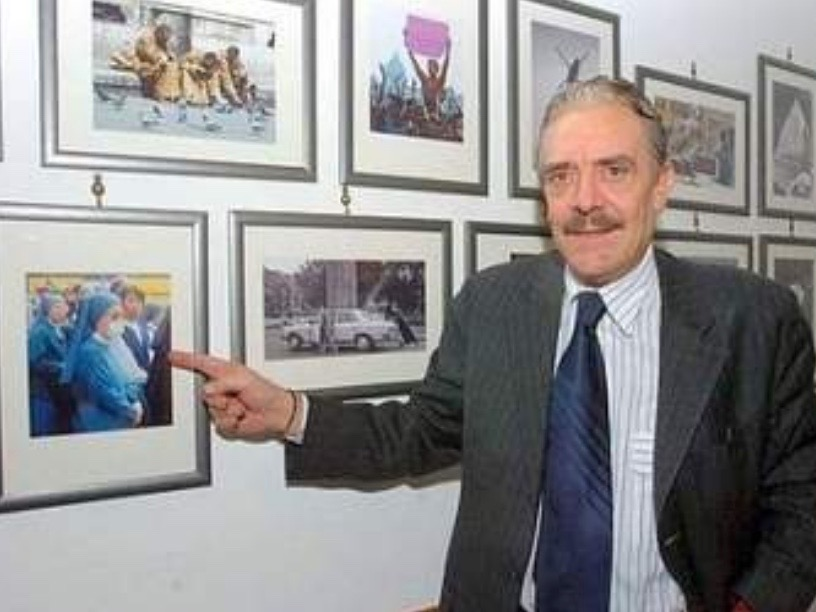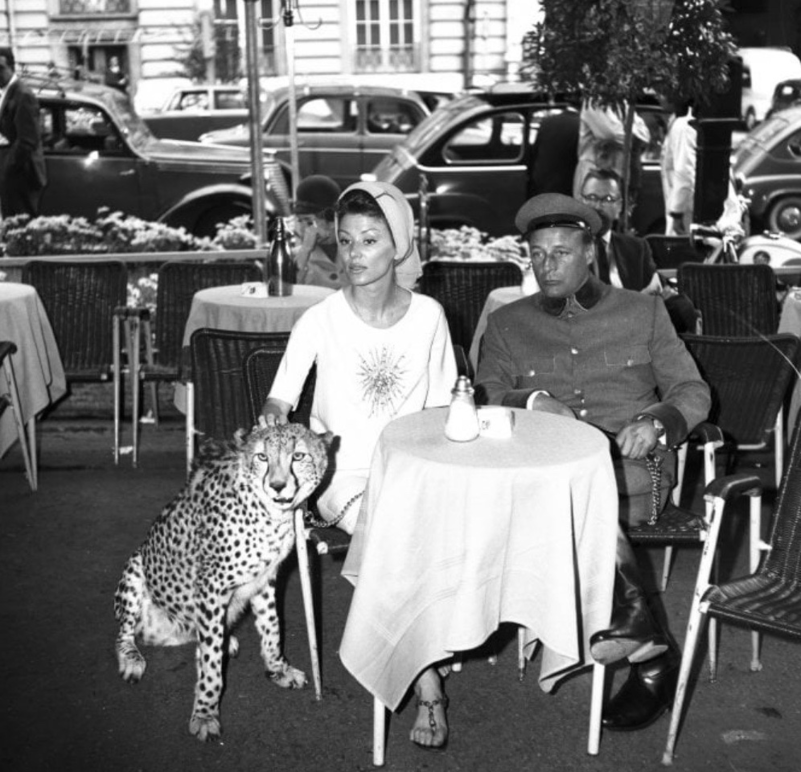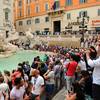Rome Museum Honors Rino Barillari, Fellini's "King of the Paparazzi"
ROME -- It was Federico Fellini in the days of Rome's "Dolce Vita" who dubbed photographer Rino Barillari "King of the Paparazzi" -- and incidentally popularized the term. This month Rome's prestigious Maxxi museum honors King Barillari's 60-year career with an exhibition of his photos. Their taking brought him 76 smashed cameras and sent him to hospital emergency rooms no less than 163 times, with 11 broken ribs and one knife stab.
Saverio ("Rino") Barillari was born Feb. 8, 1945, at Limbadi, near Vibo Valentia in Calabria. From there he left home, penniless, at age 14 to seek his fortune in Rome. Sleeping in the streets, he eventually earned enough to be able to buy, "on a whim" (his words), a used Comet Bencini camera and begin work as a "paparazzo." He says he then "joined the wandering photographers" around the Trevi Fountain area and, to make ends meet, took photos of tourists there.
The word "paparazzo" is defined by the Merriam-Webster dictionary as a "freelance photographer who aggressively pursues celebrities for the purpose of taking candid photographs." The word was actually invented by Fellini, who, in his 1959 movie, "La Dolce Vita", gave the name "Paparazzo" to the photographer character who accompanied the character of the scandal-mongering journalist Marcello Rubini. (For a lively synthesis from the finale of that movie, see on youtube)
On view on view in Rome's Maxxi museum are 100 pictures from Barillari's personal archive pf 400,000 photographs. The Dolce Vita actors and actresses of the Fifties are represented, along with examples of his famous scoops, such as the finding of a trove of photos of kidnap victim Paul Getty III; the personal effects of Pier Paolo Pasolini after his murder; a prison revolt in the Rebibbia prison in Rome; and Red Brigades terror attacks including of the dead bodyguard of Aldo Moro right after that kidnapping.
From the outset the clients for Barillari's celebrity Via Veneto photos were the Associated Press, UPI, and the Italian press agency ANSA. But after the revolutionary year of 1968 he also photographed deeply serious Mafia and terrorist attacks in Rome, published in powerful local newspapers like Il Messaggero and Il Tempo. From those tough old days he continued shooting photographs, and this reporter ran into him frequently. Later in life he and his works were celebrated, to the point that the Xi'an International University of China named him professor of photography, and he was also named a "Commendatore" of the Order of the Italian Republic.
In a recent interview with Candida Morvillo in the daily Corriere della Sera, Barillari was asked what it was like to be a Dolce Vita photographer. "It was thrilling -- one night I wept hearing Frank Sinatra singing in the street, but afterward there was a fistfight -- that's important, it was an instant of provocation; if the individual didn't want the photo, you got the best shot when you made him get mad." In this way Barillari enraged Peter O'Toole, whose punch in the face cost Barillari two stitches. "He was married, but I'd caught him with someone else, Barbara Steele. Later we made peace -- these folks knew that they needed us. Today they dodge us: they just go on TV and cuss, and think they're Oscar material," he told Morvillo.
Actress Claudia Schiffer's bodyguard once tossed a bucket of water on him, because, as Barillari explaied, he had been trying to see if (as someone had written) her thighs showed cellulite. In yet another notorious incident, actress Sonia Romanoff shoved an ice cream cone into his face: "That morning she'd married an old geezer, and that evening I caught her holding hands with someone else."
What about today's photography? "The smart phone is the agony of a paparazzo. But selfies ruin the individual because they do not tell the truth," he replied.
Curator is Martino Crespi, based on idea of Massimo Spano and Giancarlo Scarchilli, with an interactive sound installation by Federico Giangrandi for the Editorial Broup Bixio NEAR. Exhibition organizer is the Istituto Luce Cinecittà, with Camilla Cormanni, and with the contribution of the Ministry of Culture, and sponsors Master Card, Champagne Pommery and SIAE.











































i-Italy
Facebook
Google+
This work may not be reproduced, in whole or in part, without prior written permission.
Questo lavoro non può essere riprodotto, in tutto o in parte, senza permesso scritto.